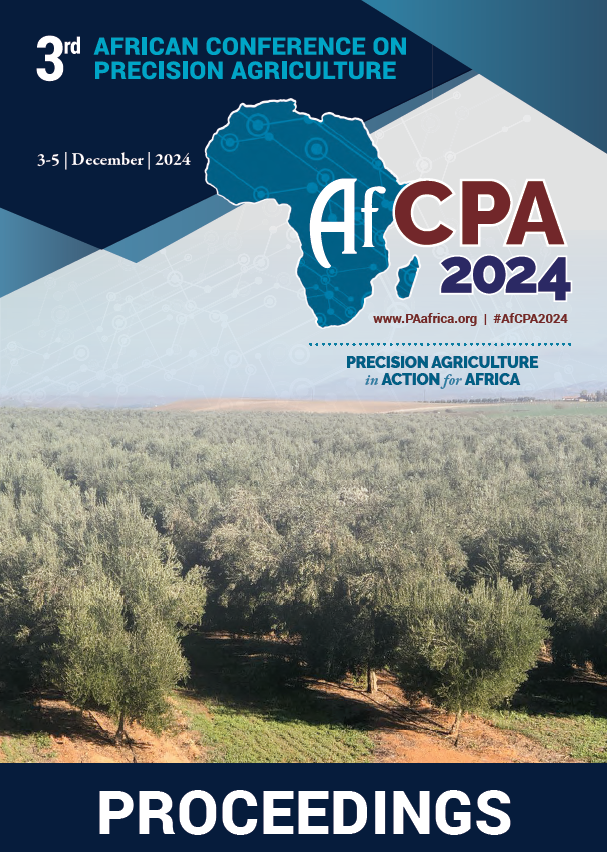Download the Conference Proceedings
Proceedings
Authors
| Filter results10 paper(s) found. |
|---|
1. Biochar and/or Compost for Soil Quality and Maize Yield Improvement in an Acidic Ferralsol Soil in Kenya.The rapidly increasing global population, climate change and dwindling resources have made it very difficult to meet global food demand. To address the issue of food insecurity, sustainable intensification of agriculture (SIA) has been proposed. However, the consequences of poorly managed agricultural intensification can negatively affect the ecosystem. Biochar and compost application has been widely recommended as a highly promising soil fertility replenishment option to promote sustainable agriculture.... |
2. Estimating soil organic carbon from cell phone imagesSoil organic matter (SOM) is considered as the backbone of soil health and soil quality. Thus, its’ estimation is critical to support the development of management decision including precision agriculture. To overcome challenges of laborious, rather expensive and time-consuming laboratory measurements, recent advances in image acquisition systems provided a new dimension of image-based SOM prediction. However, challenges remain in using soil images taken directly in the field due to variable... A. Biswas, Y. Fu, P. Taneja, S. Lin, P. Daggupati, H. Vasava |
3. Just a moment; the need for streamlining precision agriculture data in AfricaPrecision agriculture (PA) data sources in the era of digital agriculture are diverse in terms of the range of technology options and the types of data they generate. These include proximal sensors, unmanned aerial vehicle (UAV), satellites, farm machinery mounted sensors and robotics to generate static data or real time information (e.g., yield monitoring). Government institutions, scientists and private sectors take the lion’s share in generating PA data at innovation, validation and dissemination... T.B. Gobezie, A. Biswas |
4. La fertilité indigène du sol : un élément catalyseur de l’agriculture de précisionDans le contexte actuel de la dégradation des ressources naturelles et des problèmes de disponibilité et d'accessibilité des intrants agricoles, l'agriculture de précision dont le point d'entrée est la connaissance de la fertilité endogène du sol s'impose. Des essais soustractifs ont été conduits pendant deux ans (2018-2019) à la Station d'Expérimentations Agronomiques de l'Université... K. William, J. Sogbedji, M. Lare |
5. The roles of key public services on the adoption of climate-smart agricultural technologies in coffee-based farming system of EthiopiaMany studies focused on the adoption studies of relatively expensive technologies such as improved varieties, inorganic fertilizers, and agricultural machines. However, limited empirical studies have been conducted on the adoption of improved agricultural practices such as intercropping, manure application, crop rotation with leguminous crops and forages, conservation tillage, and soil and water management practices which are tremendously important for climate change adaptation and mitigation.... S. Diro |
6. Les engrais minéraux issus du diagnostic sol améliorent la fertilité chimique et la production cacaoyère à l’Est, au Centre-Sud et au Sud-Ouest de la Côte d’IvoireUne étude sur la fertilisation minérale raisonnée a été faite sur trois ans, à l’Est (Indénié-Djuablin), au Centre-Sud (Lôh-Djiboua) et au Sud-Ouest (Nawa) de la Côte d’Ivoire afin, d’évaluer les effets de 6 formules d’engrais minéraux sur la fertilité du sol et la production cacaoyère. Ainsi, sur chaque site, le dispositif expérimental a été en bloc de Fisher,... A. Kotaix |
7. Recommandation De Formules De Fertilisation Site-spécifique Pour La Production Du Maïs Dans La Région Des Savanes Du TogoDans le contexte actuel de la dégradation des terres agricoles et des difficultés de disponibilité et d'accès aux intrants agricoles en particulier les engrais, la maximisation de l'efficience d'utilisation des nutriments en nutrition des plantes devient plus que jamais une nécessité. Nous avons conduit en 2020 sous culture de maïs (Zea mays L.), des essais soustractifs à base de l'azote (N), du phosphore (P) et du potassium... M. Lare, J. Sogbedji, K. Lotsi, K. Amouzou, A. Ale gonh-goh, A. Agneroh |
8. Variability in Yield Response of Maize to N, P and K Fertilization Towards Site-specific Nutrient Recommendations in Two Maize Belts in TogoLes régions de savane et du centre sont les principales zones de production de maïs au Togo, mais avec des rendements en grains de maïs à un seuil de seulement 1,5 Mg ha -1 . Nous utilisons une approche participative pour évaluer l'importance des trois principaux macro-éléments (N, P et K) pour la culture du maïs dans les deux régions afin de permettre davantage de recommandations d'engrais spécifiques au site et... J. Sogbedji, M. Lare |
9. Maximisation De L’efficience D’utilisation Des Nutriments : Recommandation De Fertilisation à La Carte Pour Le Maïs Sur Les Ferralsols Du Sud-togoL'amélioration de la nutrition des plantes à travers l'agriculture de précision devient incontournable pour l'optimisation de l'entreprise agricole et la protection de l'environnement. Nous avons conduit pendant la grande saison culturelle de 2019 et 2020, sous culture de maïs (Zea mays L.), des essais soustractifs à base de l'azote (N), du phosphore (P) et du potassium (K) à la station d'expérimentations agronomiques (SEAL)... J. Sogbedji, L. William, M. Lare, A. Sekaya, K. Sika , E. Tagba |
10. Evaluating Soil Organic Matter Under a No-Till System Using Digital Sensors (EM38 and MSP3)Agriculture, especially in no-till systems, plays a crucial role in ensuring global food security. The pressure on agricultural lands due to a growing population and climate change necessitates innovative solutions. Proximal soil sensing using electromagnetic induction (EMI) and electrical conductivity (ECa) sensors has gained prominence. These technologies provide rapid, non-destructive measurements of soil properties, offering advantages over remote sensing and laboratory analyses.... H. Hajjaj, K. Ibno namr, E. Abdellah , C. El khalfi |
